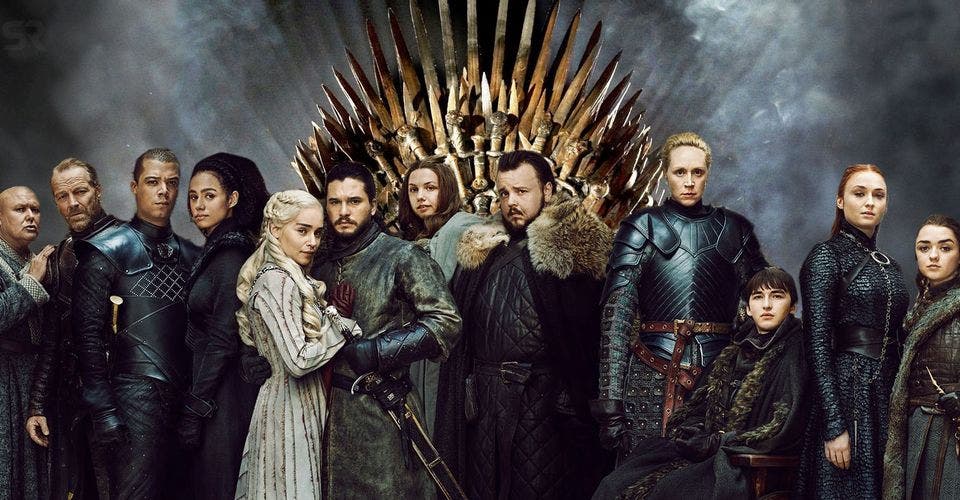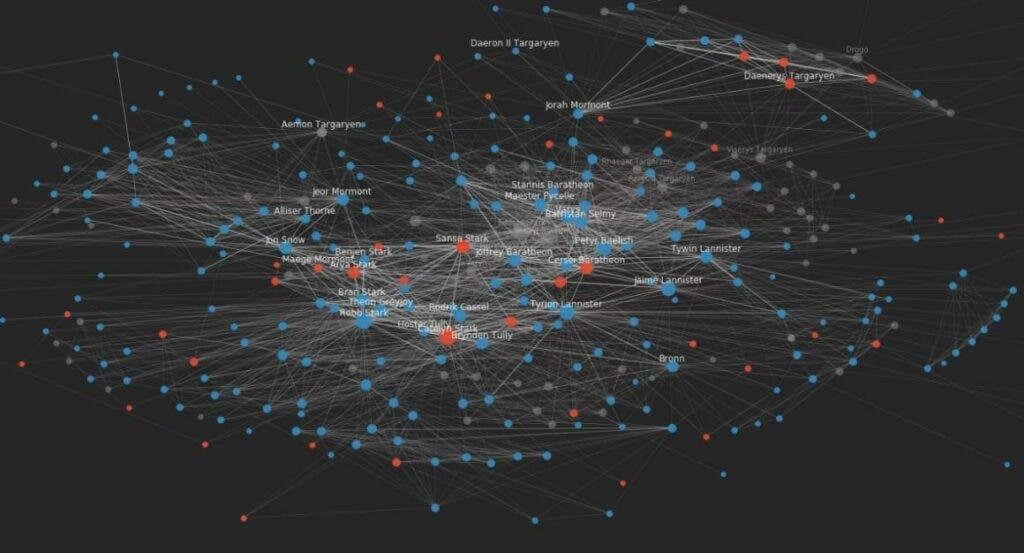
George R.R. Martin’s Game of Thrones book series is renowned for its complex narrative featuring thousands of characters whose plot lines elegantly intertwine with one another. Now, a new study performed by an interdisciplinary team of scientists, including physicists, psychologists, and mathematicians, employed data science and network analysis techniques to reveal hidden connections between your favorite GoT characters.
The findings suggest that the interactions between the various characters in the epic saga are very similar to how humans maintain relationships in the real world. And, perhaps most surprising, the tragic murders for which the series is famous aren’t all that unpredictable or as random as they may seem at first glance.
“This study came about when keen personal interests in G.R.R. Martin’s writing intersected with an established research project called ‘Maths Meets Myths‘. This project has been using mathematical tools like network science to quantify and compare the structure of mythological epics. We thought it would be both fun and informative to apply these methods to A Song of Ice and Fire since it really stands out in terms of scale and complexity,” co-author Professor Colm Connaughton, from the University of Warwick, told ZME Science.
“I would say the main finding is that Martin’s writing, either consciously or subconsciously, reflects social and temporal patterns that we are cognitively familiar with from real life. We propose that this helps to keep the narrative both comprehensible and engaging despite its huge scope,” he added.

The researchers found that the over 2,000 named characters in the A Song of Ice and Fire series had over 41,000 interactions between them. But if you could only remember a handful, that’s just perfectly normal. According to an often-cited figure, known as Dumbar’s number, humans can only maintain 150 connections at a time and according to the new study, the most predominant characters in the book average out to have only 150 others to keep track of.
British anthropologist Robin Dunbar found this ‘magic’ number after studying the ratios between brain sizes and group sizes in non-human primates. When he applied the same technique to humans, Dunbar found a remarkable consistency around the number 150, which seems to be the upper limit to how much social complexity the human brain can handle. It’s quite fascinating to see the same number pop up in a fantasy world — in fact, this may partly explain why G.R.R. Martin’s books have been so successful.
“We propose that such consistencies help in making Martin’s world comprehensible to us regardless of whether or not we find realistic parallels in the story,” Connaughton told me in an email.
Many GoT fans have expressed their dismay when leading characters, whether loved or hated, were expeditiously killed off at the stroke of a pen. Some may think that these deaths are somewhat random in order to thicken the plot and keep the story interesting as it unfolds over thousands of pages. But the study shows that there is actually a pattern to them when the chronological sequence is reconstructed. According to the findings published in the Proceedings of the National Academy of Sciences, the untimely deaths actually reflect common historical patterns in the real world. And it’s this mix of realism and unpredictability that makes the books so engaging.
“Patterns in when deaths occur help to explain why many readers find the narrative to be full of surprises and often feel that no characters are ‘safe’ in Martin’s world. For example, I remember personally, being shocked at Eddard’s exit in book one and I certainly never saw the Red Wedding coming! At least now, I have a better understanding of why,” Connaughton explained.
GoT’s complex narrative and tangled web of characters just became a whole lot easier to understand now — but this work wasn’t straightforward. British researchers from Coventry, Warwick, Limerick, Cambridge, and Oxford universities all contributed with their own unique set of expertise, and tying everything together was challenging, to say the least.
“The biggest challenge was figuring out how to get 7 authors with very diverse perspectives to agree on the final wording of the article. There are some sentences in there that took a day to write!” Connaughton said.
The same method can be used to perform literary analyses of other books. More such studies may tell us more about how complex narratives can be comprehensible and relatable. They also show that the greatest authors are those that reflect real life with their works.
“Narratives are centrally important to how we understand and relate to our social world. While we can identify clear human preferences for simple narratives, many issues cannot be sensibly reduced to simple stories. It is surprising how little we understand about what makes for a successful complex narrative. Our work aims to help in this understanding,” Connaughton said.


